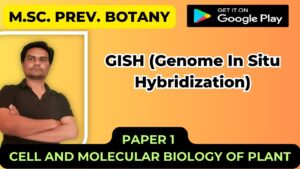![]()
Programmed cell death
- Programmed cell death (PCD) is death of a cell in any form, mediated by an intracellular program.
- In contrast to necrosis, which is a form of cell-death that results from acute tissue injury and provokes an inflammatory response,
- PCD is carried out in a regulated process which generally confers advantage during an organism’s life-cycle.
- PCD serves fundamental functions during both plant and metazoa (multicellular animals) tissue development.
Apoptosis or Type I cell-death
- Autophagic or Type II cell-death ( cytoplasmic: characterized by the formation of large vacuoles which eat away organelles in a specific sequence prior to the nucleus being destroyed.
- Besides these two types of PCD, other pathways have been discovered. Called “non-apoptotic programmed cell-death” (or “caspase-independent programmed cell-death” or “necrosis-like programmed cell-death”)
- these alternative routes to death are as efficient as apoptosis and can function as either backup mechanisms or the main type of PCD.
- Plant cells undergo particular processes of PCD which are similar to autophagic cell death.
- However, some common features of PCD are highly conserved in both plants and metazoa.
History
- The concept of “programmed cell-death” was used by Lockshin & Williams in 1964 in relation to insect tissue development, around eight years before “apoptosis” was coined.
- Since then, PCD has become the more general of these two terms.
- PCD has been the subject of increasing attention and research efforts.
- This trend has been highlighted with the award of the 2002 Nobel Prize in Physiology or Medicine to Sydney Brenner (United Kingdom), H. Robert Horvitz (US) and John E. Sulston (UK).
- The cell cycle, or cell-division cycle, is the series of events that take place in a eukaryotic cell leading to its replication.
- In “APL regulates vascular tissue identity in Arabidopsis”, Bonke and colleagues state that one of the two long-distance transport systems in vascular plants, xylem, consists of several cell-types
- “the differentiation of which involves deposition of elaborate cell-wall thickenings and programmed cell-death.”
- The authors emphasize that the products of plant PCD play an important structural role.
Introduction to Apoptosis:
- Every normal living cell of animals, plants and even bacteria are mortal. I.e., they must die after some time. Cell death is a finely tuned programme inherent in the cells genetic machinery. This normal cell death which is the part of normal development and maintenance of homeostasis is called apoptosis or programmed cell death (PCD).
- This phenomenon is very much different from death of a cell due to pathological cause or necrosis. This process is highly regulated and any defect in apoptotic machinery will lead to extended survival of cells which may result in neoplastic cell expansion, leading to genetic instability and accumulation of mutations.
- Basic morphological and biochemical features of PCD have been conserved in both plant and animal kingdoms.
- It should be noted, however, that specific types of plant cells carry out unique cell-death programs.
- These have common features with animal apoptosis for instance, nuclear DNA degradation but they also have their own peculiarities, such as nuclear degradation being triggered by the collapse of the vacuole in tracheids elements of the xylem.

Cellular Events of Apoptosis:
It is a normal physiological response to specific suicide signals or lack of survival signals. During this process at first the nucleus and cytoplasm condense, i.e., chromatin material condenses and migrates to nuclear membrane, the cytoplasm undergoes shrinkage without any damage to plasma membrane.
The cell contents are packaged in membrane bound bodies and the cell is broken down into pieces called apoptotic pieces, though still functioning, are engulfed or phagocytosed or digested by macrophages or by neighbouring cells (Fig. 5.33).
Mechanism of Apoptosis:
There are three major pathways for activation of caspase which causes cleavage of substrates leading to apoptosis.
i. Mitochondrial/Cytochrome pathway:
It is mediated through activation of Bcl-2 (gene) which results in production of Apaf-1, caspase-9 and caspase-3 enzyme synthesis which leads to the phenomenon of apoptosis (Fig. 5.34).
ii. Tumour-necrosis factor-receptor (TNF) pathway:
In this pathway the ligation of members of the TNF-receptors takes place, activating caspase-8 and then caspase-3 which leads to apoptosis.
iii. Granazyme B pathway:
Granazyme B, a cytosolic T cell product, directly cleaves and activates several caspases, resulting in apoptosis. A number of genes have been identified which play role in the regulation and accomplishment of apoptosis, such as egl-1, Ced-1-10. Studies on these genes indicated that Ced-9 acts upstream of Ced-3 and Ced-4
Ced-9 → Ced-3→Ced-4→Cell death
Ced-3 and Ced-4 promote apoptosis, while Ced-9 Is anti-apoptotic and protects cells from apoptosis by antagonizing Ced-3 and Ced-4. The Ced genes are responsible for all programmed cell death.
Caspases are cysteine proteases which cleave the substrates at the C-terminal of an aspartic acid residue. Different caspases have different substrate recognition preferences and cleavage of substrates by caspases results in disassembly and consequent death of cell in a highly organized manner.
Death receptors are important in ‘instructive’ apoptosis where ceil death is brought about by the secretion of death legends which bind to death receptors on the target cell.
Importance of Apoptosis:
It is a necessary mechanism complementary to proliferation to ensure homeostasis in all tissues. Removal of a number of vestigeal structures (developmental structure, e.g., tail) is caused by programmed cell death. Apoptosis is considered a necessary anticancer mechanism, as defect in this process leads to neoplastic and tumorigenic cell development.
PCD in pollen prevents inbreeding During pollination,
- Plants enforce self-incompatibility (SI) as an important means to prevent self-fertilization.
- Research on the corn poppy (Papaver rhoeas) has revealed that proteins in the pistil on which the pollen lands, interact with pollen and trigger PCD in incompatible (i.e. self) pollen.
- The researchers, Steven G.
- Thomas and Veronica E. Franklin-Tong, also found that the response involves rapid inhibition of pollen-tube growth, followed by PCD.



